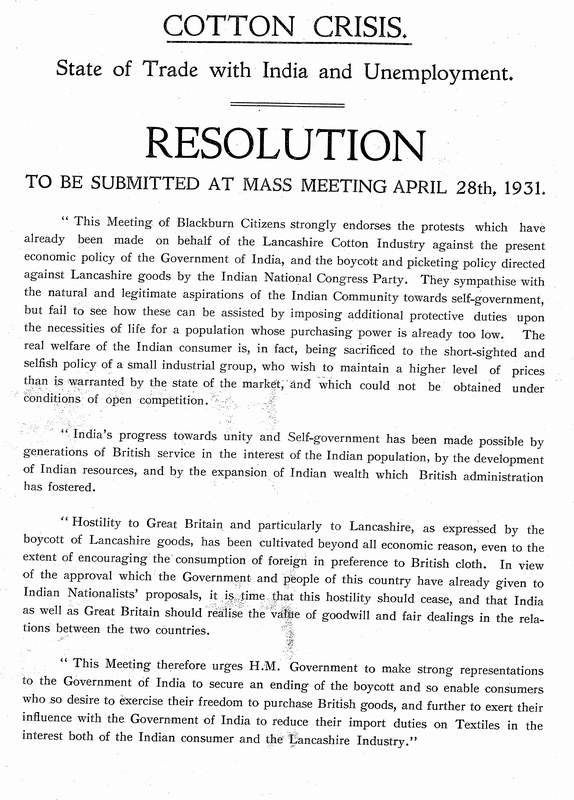Bolton between 1920 and 1950
A sense of optimism engulfed Great Britain for a short time immediately after the end of hostilities in 1918. It did not last. By early 1920 the economic effects of four years of war had permeated into the fabric of the Victorian heavy industries that had propelled the country into dominance during the nineteenth century. But the rise of the United States and the crippling effects of four years of war had taken its toll. Britain’s former markets for textile products, coal and steel had been massively impacted. Overseas trade evaporated with customers having found alternative suppliers, or simply not being able to afford the cost of products traditionally supplied by Britain. In 1921 alone, Gross Domestic Product dropped by over 8%; in total 20% over the previous two years. The country had entered a deep recession and it would be 1934 before output returned to pre-war levels.
While the seeds of the demise of Lancashire’s cotton dominance were sown before the war, it was the war itself which marked the real genesis of its decline. This was not obvious immediately. In the early years of the 1920s the cotton industry seemed to be getting back on track. With Bolton being very close to the epicentre of cotton production a new mill was authorised for construction, Holden’s Mill in Astley Bridge, Bolton. This particular one was of note in that its 1926 completion marked the end of mill construction across the entire county. Around that time Lancashire’s textile output also reached its high-water point, but by 1930 it was already falling, the start of a slow but inexorable decline that stretched over fifty years.
Economics are usually the context for life and Bolton was no different. The mini-recession of 1919 – 1921, although deep, was not long. Jobs very slowly started to reappear and those that had money in their pocket wanted to spend it. Britain’s culture had evolved. Women wanted to go out and enjoy themselves and became active politically. People started to become ‘consumers’ and over time acquired the new domestics goods that had started to appear, radios and household aids. But in 1920s Bolton that was still for the middle class and wealthy. In most households the main bread-winner worked in either the cotton mills or perhaps down in nearby pits. Income levels were still very low, barely above subsistence. Politics sharply divided the classes, fuelled by the inequalities created by a locally challenged textile economy and the wider depression of the 1930s.


Bolton’s landscape was punctuated by at least two hundred mill chimneys, each one expelling the waste of the coal fired boilers required to drive its many static steam engines. With open coal fires still used as the main source of heat in thousands of homes, the air around the town was not at all clean. The impact of this dirty environment could be physically seen on the buildings; over time most would become discoloured, a deep soot grey on stone, or ruby red on brickwork. There were also health impacts. Years of working in hot damp mills and breathing air heavily laced with cotton particles would often be the root cause of bronchial conditions, exacerbated by the polluted environment outside.
Over the thirty years to 1950 life was getting easier but it was still tough. Education and the gradual appearance of the welfare state had started to improve conditions but it would be the 1960s and 1970s before the relatively benign world we have today would take shape.

Bolton scenes
An early twentieth century postcard showing several Bolton locations including ‘West Glen’ , an area mentioned in the book. This particular scene is now substantially built over and difficult to locate on modern maps.
The postcard also shows an earlier version of the shield part of the Bolton County Borough coat of arms. To the bottom left of the shield sits the red rose of Lancaster and the three objects to the upper right are an arrow, a shuttle and a mule spinning spindle. The shuttle and spindle are obvious references to Bolton’s past prominence in the textile industry. The arrow is much older and is a reference to the famous Bolton longbow archers who played a significant part in the English defeat of the Scots at the Battle of Flodden in 1513.


